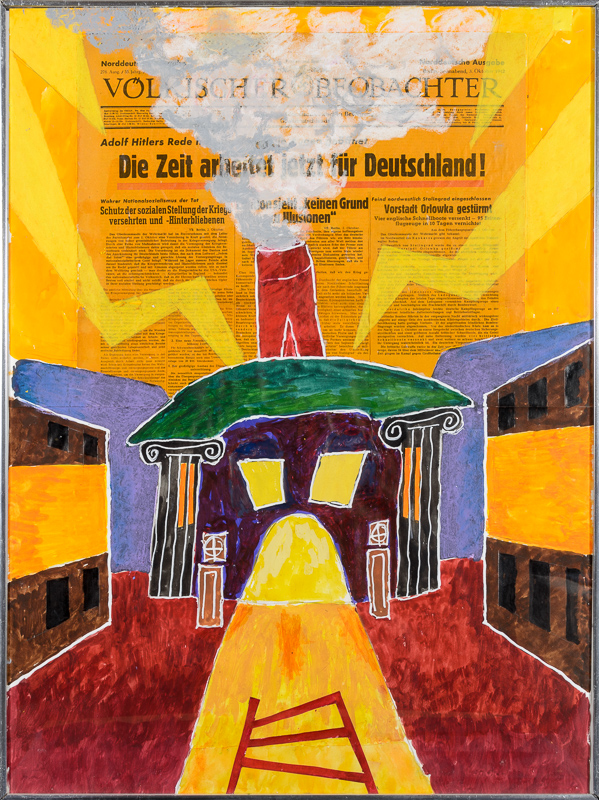.
Tiden arbejder for Tyskland • Time works for Germany • Die Zeit arbeitet für Deutschland

Akvarel, slettelak. Avispapir, papir.
Den nazistiske avis Völkischer Beobachter, oktober 1942.
Slaget ved Stalingrad var i fuld gang og varede fra august 1942 til februar 1943. Tyskerne tabte slaget om byen, som gav adgang til store oliefelter. Det var et afgørende vendepunkt for den nazistiske fremmarch i Rusland. De brutale kampe i byen foregik fra “hus til hus” og “rum til rum”. Antallet af tabstal er usikkert. Det anslås, at 850.000 tyske soldater døde og mindst 1,2 mio. russiske soldater.
Völkischer Beobachter udkom dagligt. Det var en nationalistisk, stærk antisemitisk og udspekuleret propaganda-avis. Den udtrykte ofte diktaturers selvforståelse: de er befolkningens sande nyhedsformidlere.
Watercolor, correction fluid. Newspaper, paper.
The newspaper Völkischer Beobachter, October 1942.
The Battle of Stalingrad was in full swing and lasted from August 1942 to February 1943. The Germans lost the battle for the city, giving access to large oil fields. It was a crucial turning point for the Nazi advance in Russia. The brutal fighting in the city took place from “house to house” and “room to room”. The number of losses is uncertain. It is estimated that 850,000 German soldiers died and at least 1.2 million Russian soldiers.
Völkischer Beobachter was published daily. It was a nationalist, strongly anti-Semitic and cunning propaganda newspaper. It also expressed the dictatorship’s understanding of itself: they were the true news communicators of the population.
Aquarell, Korrekturflüssigkeit. Zeitung, Papier.